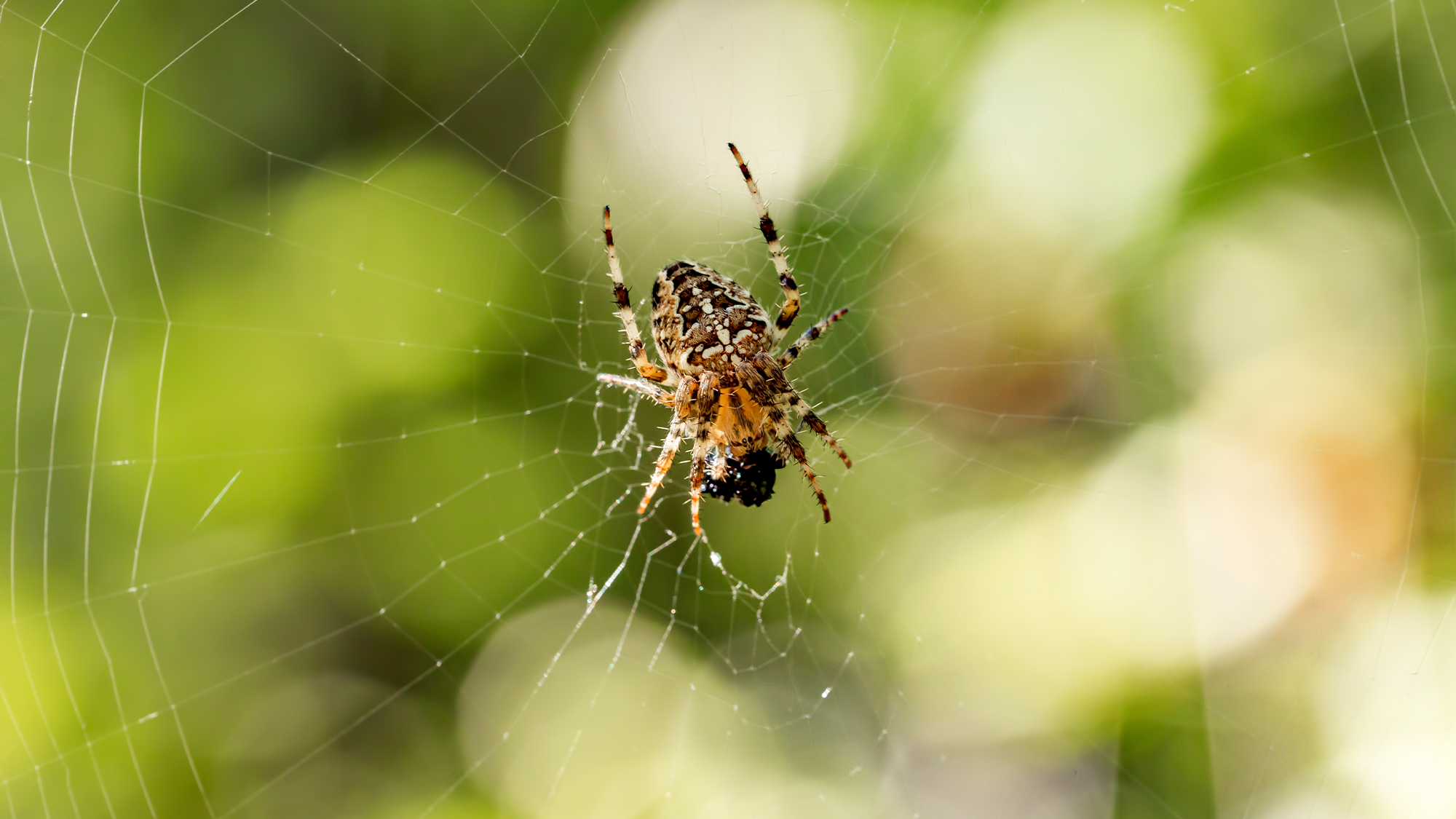

For spiders, spinning their silky webs is a matter of survival. Those that don’t weave good enough silk to spin an insect-trapping web will have a much tougher, or even impossible, time getting enough food to eat. Since spiders are found throughout world, the more fine-tuned their webs are to their environment, the better they will work.
In a study published April 18 in the journal Frontiers in Ecology and Evolution, biologists found that the glue that makes orb weaver spiders’ webs so sticky actually evolves faster than the spiders’ genes.
[Related: Black widows battle their even deadlier cousins in a brutal spider war.]
“Discovering the sticky protein components of biological glues opens the doors to determining how material properties evolve,” study co-author and Washington and Lee University biologist Nadia Ayoub said in a statement. “Spider silk fibers and glues represent a fantastic model for answering such questions since they are primarily made of proteins and proteins are encoded by genes.”
Like the individual threads of a tapestry, each strand in an orb weaver spider’s web works to capture food. The web’s stiff frame absorbs the impact of the prey before it is trapped by the sticky lines so that the spider can tackle its food. A special glue that is synthesized in the spider’s aggregate glands makes the lines of the web sticky by absorbing water from the atmosphere. The glue should be altered to achieve the best stickiness for the amount of humidity in the air in the region where the spider lives. Since there are numerous species of orb weaver spiders living in many environments, the team on this study believed their glue must adapt to humidity levels.
To investigate this glue adaptation strategy, the team focused on two species– Argiope argentata (A. argentata) and Argiope trifasciata (A. trifasciata). A. argentata lives in dry environments and is native to Southern California. The team had them build webs in a lab, but were fed a diet comparable to their prey and compared the glue droplet volume found in nature to make sure they were equivalent to what they weave in nature. A. trifasciata lives in humid environments all over the world and the team collected webs from them in the wild.
They analyzed the proteins in the glue and the droplets’ material properties and found that the droplets from the dry-living A. argentata spiders are smaller than those from the more humidity prone A. trifasciata, and also absorb less water as local humidity increases. A. argentata’s glue also had smaller protein cores that occupied a smaller proportion of the droplet’s volume and absorbed less water from the atmosphere.
[Related: How researchers leveled up worm silk to be tougher than a spider’s.]
The stiffness of these protein cores in the droplets affected the toughness of the glue droplets and the toughness of A. argentata’s protein core decreased as the humidity went up. A. argentata thread glue droplets were generally sticker and more closely spaced.
When the team analyzed the proteins in the glue to understand how these differences in their material properties arise from these proteins, they found that the proteins appeared in different proportions, even though they were similar. A. argentata glue had the protein products of four genes which didn’t appear in A. trifasciata glue. The extra proteins and a more balanced ratio of the glue’s key AgSp1 and AgSp2 proteins may explain the greater toughness of this glue and its lower capacity for water absorption.
“Despite the dramatic differences in material properties, the two species share most of their protein components,” co-author and Virginia Tech biologist Brent Opell of Virginia Tech said in a statement. “The sequences of these proteins are also similar between species, but the relative abundance of individual proteins differs. Modifying the ratios of proteins is likely a rapid mechanism to adjust material properties of biological glues.”
According to the team, one of the limitations to this study includes that it only looked at two species, and the relationship between proteins and web material properties are not quite to scale yet. To address this, the team is documenting protein components and the material properties of a diverse set of species.
More study on spider silk and their properties could also have some wider scientific and technological applications. “Spider silks and glues have huge biomimetic potential. Spiders make glues with impressive properties that would have applications in industry, medicine, and beyond,” said Opell.
